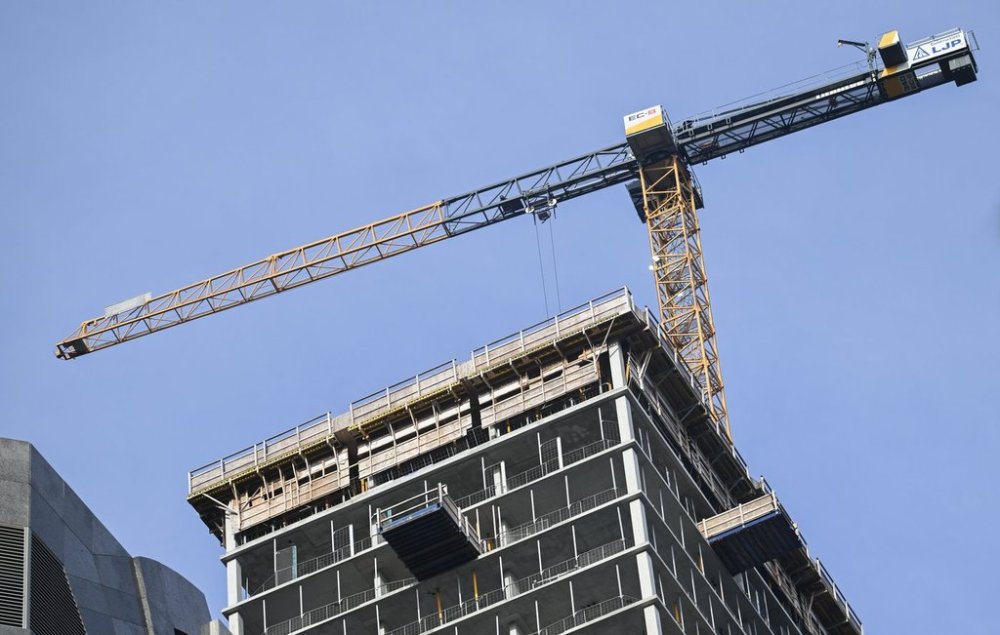Home builders warn of ‘brutal blow’ to housing sector from steel, aluminum tariffs
Advertisement
Read this article for free:
or
Already have an account? Log in here »
To continue reading, please subscribe:
Monthly Digital Subscription
$1 per week for 24 weeks*
- Enjoy unlimited reading on winnipegfreepress.com
- Read the E-Edition, our digital replica newspaper
- Access News Break, our award-winning app
- Play interactive puzzles
*Billed as $4.00 plus GST every four weeks. After 24 weeks, price increases to the regular rate of $19.00 plus GST every four weeks. Offer available to new and qualified returning subscribers only. Cancel any time.
Monthly Digital Subscription
$4.75/week*
- Enjoy unlimited reading on winnipegfreepress.com
- Read the E-Edition, our digital replica newspaper
- Access News Break, our award-winning app
- Play interactive puzzles
*Billed as $19 plus GST every four weeks. Cancel any time.
To continue reading, please subscribe:
Add Free Press access to your Brandon Sun subscription for only an additional
$1 for the first 4 weeks*
*Your next subscription payment will increase by $1.00 and you will be charged $16.99 plus GST for four weeks. After four weeks, your payment will increase to $23.99 plus GST every four weeks.
Read unlimited articles for free today:
or
Already have an account? Log in here »
Hey there, time traveller!
This article was published 11/02/2025 (242 days ago), so information in it may no longer be current.
TORONTO – Some developers say looming U.S. tariffs on Canadian steel and aluminum could be detrimental to the housing sector due to higher costs of key construction materials.
The Ontario Home Builders’ Association, which represents more than 4,000 companies offering services such as development and renovation, said the tariffs could prompt an economic slowdown and lead to decreased investment in residential real estate.
The group’s CEO Scott Andison warned that could be “a brutal blow to the housing sector and therefore to housing affordability.”

“When you throw something as dramatic as trade tariffs into an environment that’s already suffering from low margins, high interest rates and high input costs, the potential for costs … going up makes builders quite nervous,” he said in an interview
“This is just something that puts the development market into a bit of chaos.”
U.S. President Donald Trump signed an executive order on Monday to levy 25 per cent tariffs on steel and aluminum imports to his country beginning March 12 — a move that Canadian Chamber of Commerce president and CEO Candace Laing called “wrong on so many levels.”
Laing said Trump’s decision “makes it clear that perpetual uncertainty is here to stay.”
It comes amid Trump’s threat of 25 per cent across-the-board tariffs on Canadian imports, with a lower 10 per cent levy on Canadian energy. Trump has delayed those until at least March 4 in response to border security commitments.
Data from the U.S National Trade Administration shows the U.S. is Canada’s largest market for aluminum, with over three million tonnes exported to the U.S. last year.
BMO economist Robert Kavcic said Canada’s total steel and aluminum exports to the U.S. last year were $35 billion, or roughly one per cent of GDP.
Andison said an increase in the cost of construction materials would raise Canadian home prices at a time when the sector is already struggling to keep up with rising costs due to inflation.
He said input costs for materials such as lumber rose during the pandemic and never returned to pre-COVID levels.
“When you start making Canadian products less of interest to other markets such as south of the border in the U.S., that reduces the amount being produced because markets have decreased outside of Canada,” said Andison.

“And when you start reducing the amount that’s being produced, the cost of domestic sales obviously goes up.”
Potential retaliatory tariffs could also play a role in making housing more expensive, he said, noting around $20 billion in Canadian steel and aluminum products are sent south of the border per year.
Andison said two-way tariffs on a broad range of construction materials beyond just steel and aluminum — such as cement, gypsum and lumber — could drive up costs “into a crazy level that makes any construction unviable.”
“Right now, our builders can build homes, but the problem is that they would have to build them at a price that consumers cannot afford, particularly first-time homebuyers,” he said.
“They’re looking at numbers that are just in many ways outside of their scope.”
— With files from David Boles in Edmonton
This report by The Canadian Press was first published Feb. 11, 2025.



